Wonga Park Heritage Walk (Wonga Park)

This 5.2 km walk is generally easy along undulating country roads offering spectacular views and the lure of wine and cider at Kellybrook Winery. There is also a short, steep and adventurous section, with an easier alternative offered.
During the Depression of the 1890s the Victorian Government set up settlements to encourage impoverished families into a life of self sufficiency. Wonga Park was one such place. Some members of this new community were activists agitating for eight hours of work, rest and play. Thus the site became known as the Eight Hour Day Pioneer Village Settlement. All Victorian workers were awarded an eight hour day in 1916.
The walk begins with a focus on community and leads past heritage houses, ancient trees, a church and the Wonga Park Primary School. The walk then dips sharply down a grassy embankment and up into the Kellybrook winery.
Facilities are toilets, restaurant, winery, playground.
Start and finish at the Wonga Park Cottage and Community Centre, Old Yarra Road, Wonga Park.
Map of Route

Route Description
Your walk begins at the Wonga Park Community Cottage. Walk to the cottage.
1. Wonga Park Community Cottage
The home was built in 1950 and once looked over a hillside of orchards - one of the industries behind the growth of Wonga Park. The cottage features two early pre-cast concrete chimneys, one with the maker's name 'Pickering's Flemington' embossed on the side.
Footpaths are not always connected in Wonga Park. Please ensure you cross roads safely.
2. Wonga Park Hall and Mechanics' Institute
For many years there was no hall in Wonga Park and the locals had to travel by horse and cart to Warrandyte for entertainment. Imagine navigating home on a dark night? In 1908 the locals built this hall and the Mechanics' Institute Library. Wonga Park's social life increased. It hosted the Pan Pacific 1948-1949 Jamboree, a world wide Scouting event get-together known throughout the world.
3. Read's House, corner Toppings Road and Yarra Road
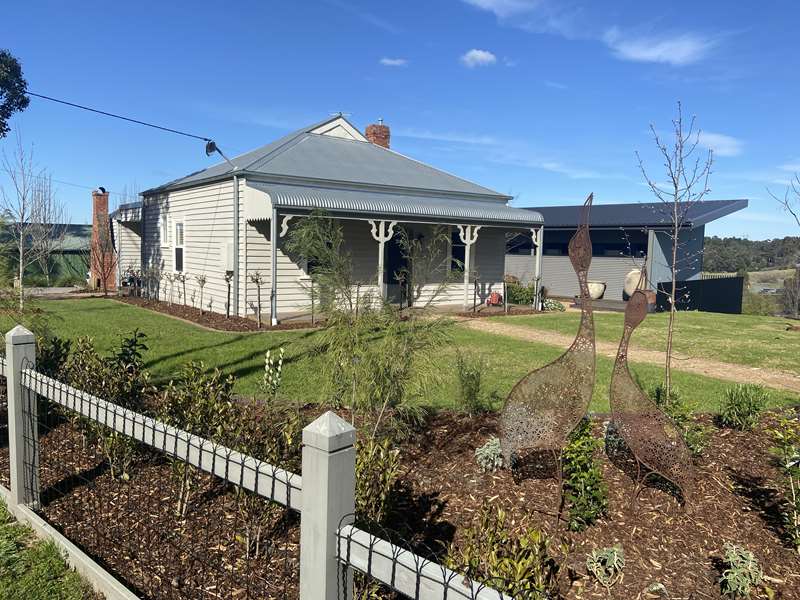
This orchardist's home was built in 1902 and consisted of just two rooms. When an extension was required Mr Read carted a two-room house from an adjoining property and attached it to the original. You can still see where the two were joined. The Read's old green orchard shed is next door in Toppings Road with a remnant lemon orchard - reminders of a once prolific fruit growing district.
4. St Marks Anglican Church
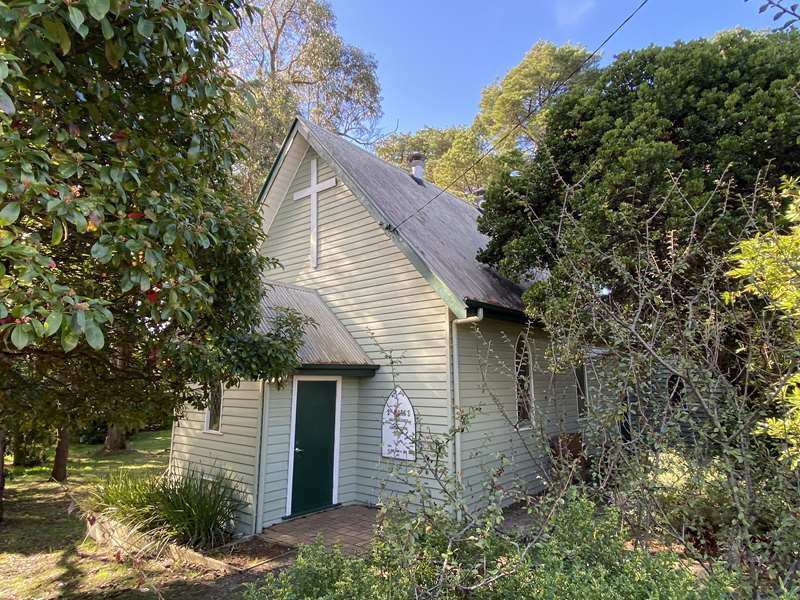
The little Gothic wooden church is typical of many small rural churches of the day. Built in 1920 it ended the need for visiting ministers to hold services at a portable altar in the Wonga Park Hall. Mr Topping donated the land and Mr Fulford (who became the first man to be married in the new church) carted the timber by horsedrawn lorry. The Walkers donated the remaining land in 1965.
You can either head down Toppings Road and take the next left which is steep or head up Yarra Road and turn right into St Denys Crescent.
5. 3 St Denys Crescent
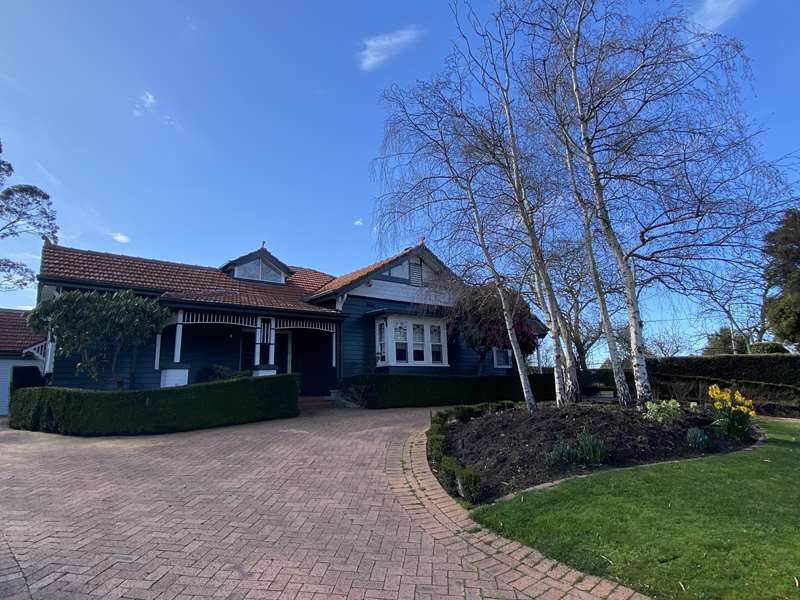
Fred Topping, a carpenter, did not just establish churches. He also built himself this lovely Californian bungalow in 1908. It represents up to date bungalow fashion of the time with leadlight-paned windows, a feature bay window, front verandah with brick piers, shingled gables and a Marseille tiled roof with finials. The side verandah is a later addition.
Carefully cross Yarra Street to the next point of interest.
6. White Lodge, 391 Yarra Road
The 1890s home was originally known as Forest Gate, a guest house owned by Emma Webb, a theatrical costume designer and husband William, a professional singer. Emma was the niece of local George Launder who was the Eight Hour Day Association's Secretary. She acquired the land from him in 1893. George carried acorns from England to grow the oak trees you see on the property.
White Lodge also had deer on its land. Elsewhere deer were hunted as sport.
Use the designated pedestrian crossing to Jumping Creek Road.
7. Old Post Office and Grocery Store, corner Jumping Creek and Dudley roads
From the 1920s, Charles Marshall ran Wonga Park's Post Office, manual telephone exchange and general store from this building until the 1960s. It survives as a private residence. In the 1940s Arthur and Teddy Davis moved a cedar train carriage to this corner. It operated as a kiosk for ten years. The original Post Office operated on the opposite corner. Both these sites are now restaurants.
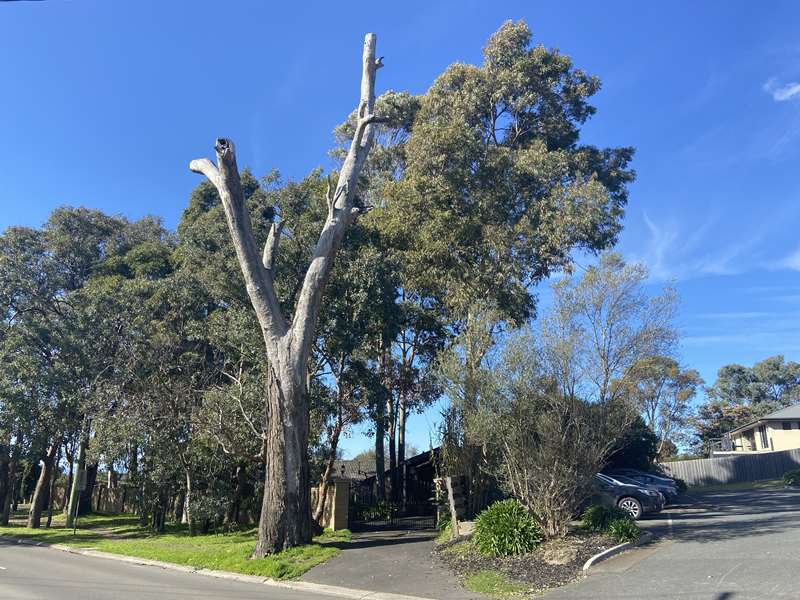
8. A very old Red Box Eucalypt, Eucalyptus polyanthemos survived for 300 plus years near the intersection of Dudley and Jumping Creek roads but has now died. The site was owned by Thomas Gamon, President of the Eight Hour Day Pioneer Association. He established a large orchard here with 700 fruit trees, and planted raspberries and strawberries. The trunk of the Red Box Eucalypt remains as a habitat tree. It is of regional significance.
9. Wonga Park Primary School, No. 3241

The first school was a relocated building moved here in 1895. It burnt down in 1911 and was replaced by the Edwardian style school in 1912. This is the room that today displays a mosaic heart-shaped welcome. The 1921 bungalow is a rare surviving example of a teacher's house in school grounds. It shows how isolated Wonga Park was in those days. The overarching Oak trees dating from this period impart a special sense of history.
10. The Ironbark Eucalypt (possibly Eucalyptus tricarpa) on the corner of Styles Court is thought to be more than 300 years old. It is an unusual eucalypt as it is on the southern extremity of its range. Perhaps a seed was carried by the wind or bird? The tree is of regional significance.
Just past the tree you will come to the junction of Fulford Road with Kellybrook Winery in the distance. Remain on Dudley Road as it veers to the left and then head to the winery.
11. Davis Road West to East
The Eight Hour Pioneer Village Settlement was mapped to a square mile bordered by roads. Davis Street is one arm of that grid. You can see the square alignment on the map.
12. Kellybrook Winery, Fulford Road
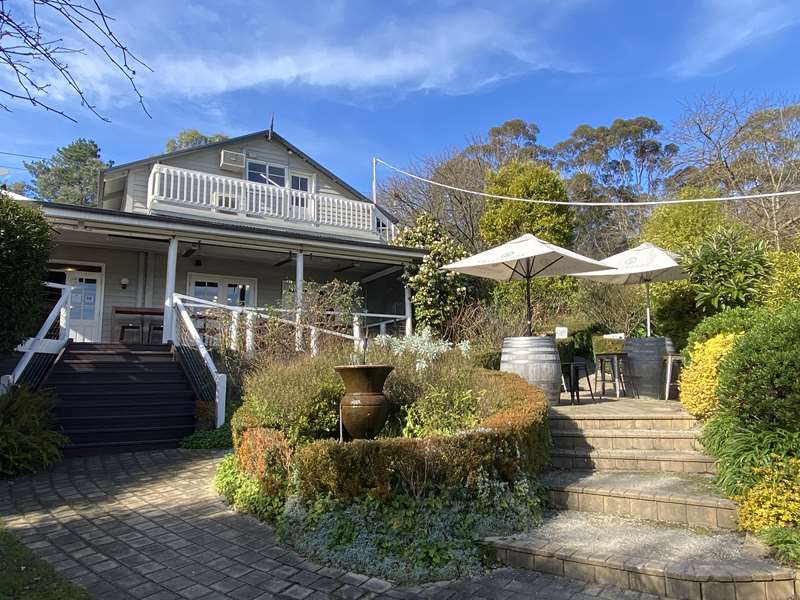
A bushfire destroyed the original orchard in 1962, but new plantings rose from the ashes to offer deluxe style cider, champagne cider and wines. The commercial cider apple orchard is thought to be the only one in Australia. There also is a large spreading oak tree (species unknown) that is thought to be more than 100 years old. Pop into the cellar during the day (Open 11am-5pm Friday - Sunday and most public holidays). The restaurant is open Fridays and weekends. Dogs are permitted in the lower garden area.
Take Fulford Road to return to Dudley Road and retrace your steps to the starting point.
This finishes your walk. Time to relax and plan your next adventure.
Access for Dogs:
Dogs are permitted on-leash but are not allowed in Kellybrook Winery (except for lower garden area).
Review:
A nice walk without any epic heritage structures. The highlight is Kellybrook Winery which is a lovely place to drop in for something to eat and drink.
Photos:
Location
9-13 Old Yarra Road, Wonga Park 3115 View Map
Web Links
→ Wonga Park Heritage Walk Guide and Map (PDF)









